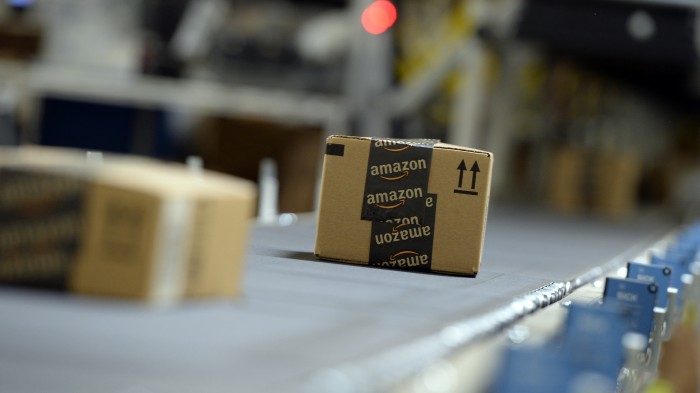Amazon Prime or Amazon Redline?
Amazon has held out its Amazon Prime membership, which offers free shipping on many items, as a form of digital equality, given that all customers pay the same $99 annual fee. But with its upgrade to same-day delivery service, a clear disparity is emerging. An analysis by Bloomberg found that in many major cities, Prime members in predominantly poor and black neighborhoods can’t get the same-day treatment.
In cities including Atlanta, Chicago, Dallas, and Washington, “black citizens are about half as likely to live in neighborhoods with access to Amazon same-day delivery as white residents,” the Bloomberg analysis found. New York’s borough of the Bronx, for instance, doesn’t get the service. And in Boston, the predominantly black Roxbury neighborhood is the only place in the metro area where same-day service is unavailable.
It’s not the first time major tech companies have been accused of "redlining," or excluding poor neighborhoods from receiving a service available elsewhere. When Google began offering its Google Fiber service a few years ago, it faced similar criticism.

By rolling out the super-high-speed service only in neighborhoods with a critical mass of market demand (Google used the cute-sounding term “fiberhoods” to describe such places), the company was effectively excluding poor neighborhoods, or so the argument went. But Google Fiber is now clearly serving poor people, too. The company later announced plans to bring high-speed fiber Internet access to a number of housing projects.
Still, such examples might be considered retail-level symptoms of wider technological inequality, in which people with resources are best able to reap the benefits of digital technologies while those without access fall farther behind.
Amazon, for its part, has responded to the Bloomberg report by saying that when a zip code within a city is excluded, it’s typically because the area has too few Prime members to justify sending in the vans—but that if more neighbors join, service will fill in.
It may be the case that it costs more to deliver in those areas. But losing money on its services has never stopped Amazon before.
(Read more: “The U.S. Government’s Internet Lifeline for the Poor Isn’t Much of One”)
Keep Reading
Most Popular
Large language models can do jaw-dropping things. But nobody knows exactly why.
And that's a problem. Figuring it out is one of the biggest scientific puzzles of our time and a crucial step towards controlling more powerful future models.
The problem with plug-in hybrids? Their drivers.
Plug-in hybrids are often sold as a transition to EVs, but new data from Europe shows we’re still underestimating the emissions they produce.
Google DeepMind’s new generative model makes Super Mario–like games from scratch
Genie learns how to control games by watching hours and hours of video. It could help train next-gen robots too.
How scientists traced a mysterious covid case back to six toilets
When wastewater surveillance turns into a hunt for a single infected individual, the ethics get tricky.
Stay connected
Get the latest updates from
MIT Technology Review
Discover special offers, top stories, upcoming events, and more.